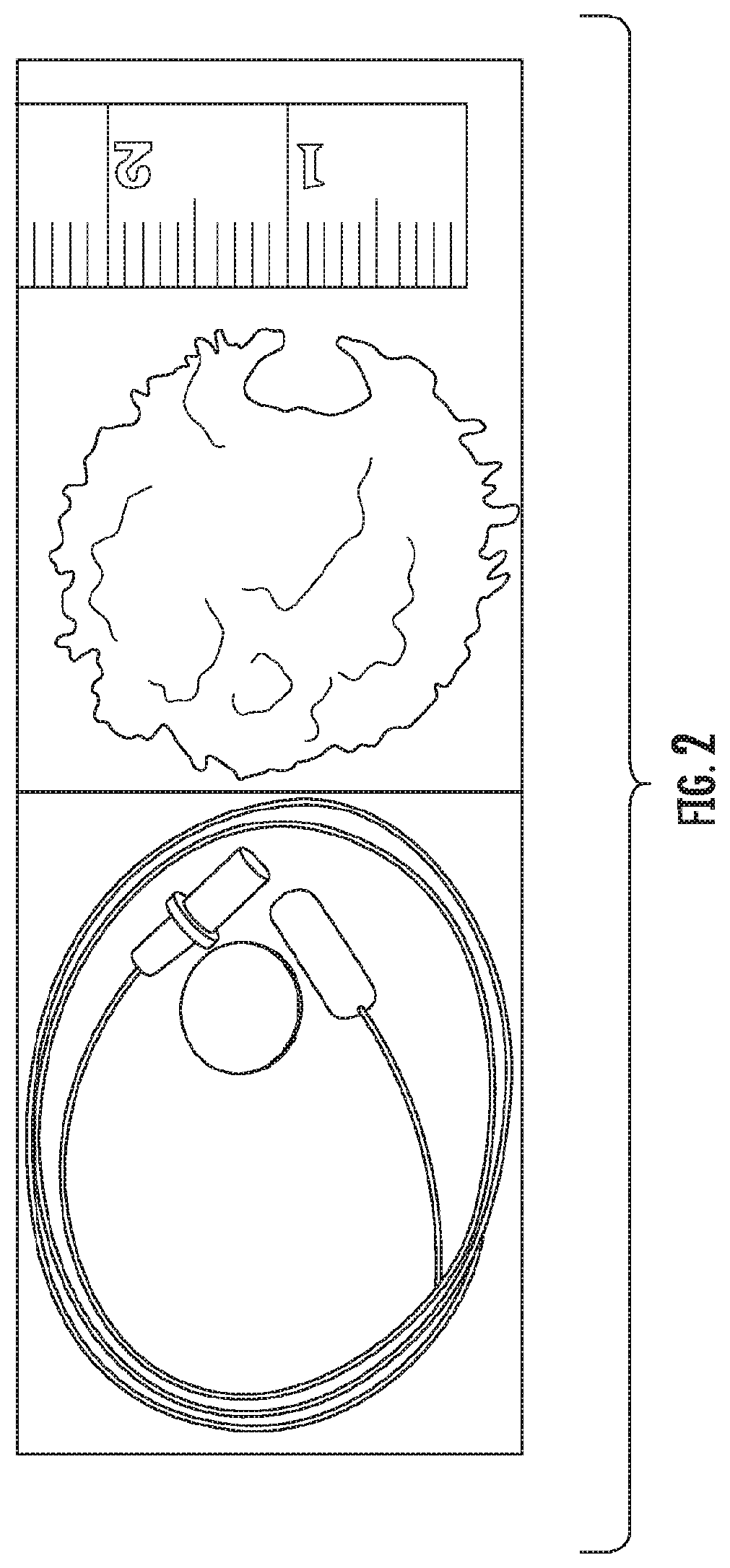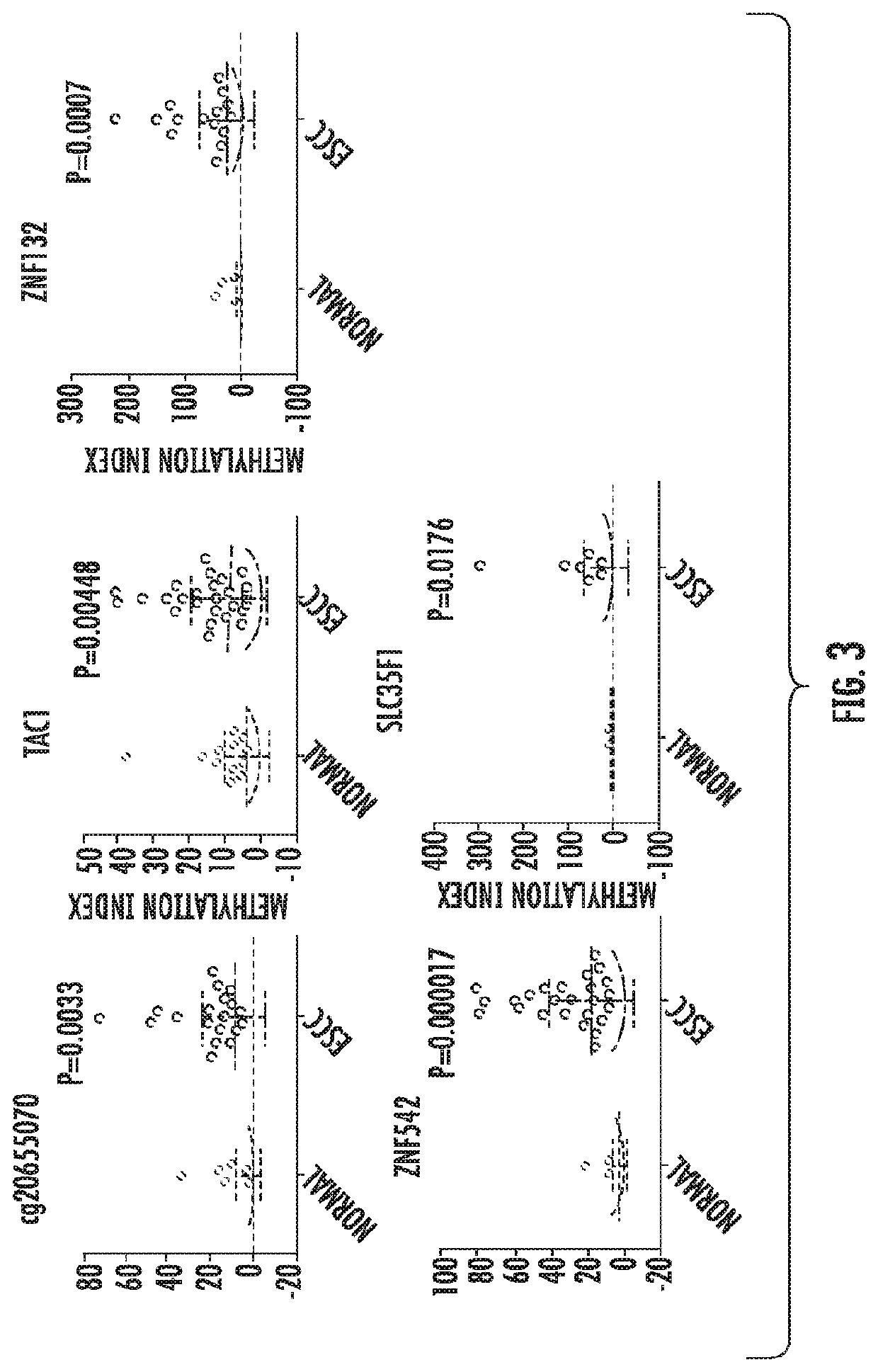Methods for Detecting and Treating Esophageal Cancer
a technology for esophageal cancer and esophageal cancer, applied in the field of cancer, can solve the problems of high morbidity and mortality rate, unfavorable endoscopic screening for escc, and negative consequences for patients at high risk of this deadly diseas
- Summary
- Abstract
- Description
- Claims
- Application Information
AI Technical Summary
Benefits of technology
Problems solved by technology
Method used
Image
Examples
example 1
thylation Assay that can Accurately Distinguish Between Normal Esophageal and ESCC Tissue Samples
[0171]The experimental design of the ESCC study began with biomarker selection from publications and the DNA methylation microarrays of The Cancer Genome Atlas (TCGA) database. There were 93 ESCC samples in TCGA along with 14 normal adjacent esophageal samples. To increase the sample size for more robust biomarker search, we also included 120 normal samples across 12 different tissue types in our analysis. Using TCGA, we looked for CpG islands with at least 30% methylation in 50% or more of tumors and less than 5% methylation in normal tissues. Candidate regions with at least two eligible CpG sites were selected. From both literature review and TCGA, 32 regions were chosen for preliminary screening. After primer design and PCR testing with fully methylated and unmethylated DNA, 15 were picked for probe design and quantitative methylation-specific PCR (qMSP). Using a subset of ESCC and no...
example 2
EsoCAN Panel on a Limited Series of Normal and ESCC Samples Obtained Via EsophaCap™ Sponge
[0172]The results shown in FIG. 3 under Example 1 demonstrated significantly higher methylation levels of five genes in ESCC vs. normal esophageal tissues. In this Example, the present invention investigated whether these markers could be used as a diagnostic test with the much more limited and less neoplastically pure DNA collected via EsophaCap. It should be emphasized that the EsophaCap™ collects cells along the entire length of the esophagus, not merely from the tumor; thus, substantial dilution of tumor DNA by normal esophageal cellular DNA occurs. Nevertheless, the present inventors' previous success with the EsoBEE assay to detect BE, which affects an even smaller portion of the esophagus than ESCC, provided confidence that an analogous panel would succeed in ESCC detection.
[0173]The diagnostic performance of our 5-gene tissue methylation biomarker panel was evaluated in EsophaCap™ sampl...
example 3
lly Validate a PCR-Based Assay for Detecting ESCC
[0175]The EsoCAN biomarker panel was developed by testing 48 matched normal and ESCC tissue biopsy samples, then by further testing on 12 ESCC and 14 non-neoplastic sponge samples. In this study, additional experiments are carried out to optimize and analytically validate the assay, as well as to validate the diagnostic accuracy of the top two candidate genes in the EsoCAN panel. Finally, concordance in assay results are established between sponges and their matched endoscopic biopsy counterparts.
[0176]Reproducibility: Technical Replicates.
[0177]First, 20 normal control and 20 ESCC patients will have three equal aliquots created from their sponge samples. DNA is extracted from each EsophaCap™ sponge aliquot and assayed for genes in the EsoCAN methylation panel. In addition, ten individual tissue samples are divided into thirds, and DNA is extracted from each aliquot and evaluated by the EsoCAN panel.
[0178]Protocol: DNA Extraction from...
PUM
 Login to View More
Login to View More Abstract
Description
Claims
Application Information
 Login to View More
Login to View More - R&D
- Intellectual Property
- Life Sciences
- Materials
- Tech Scout
- Unparalleled Data Quality
- Higher Quality Content
- 60% Fewer Hallucinations
Browse by: Latest US Patents, China's latest patents, Technical Efficacy Thesaurus, Application Domain, Technology Topic, Popular Technical Reports.
© 2025 PatSnap. All rights reserved.Legal|Privacy policy|Modern Slavery Act Transparency Statement|Sitemap|About US| Contact US: help@patsnap.com



